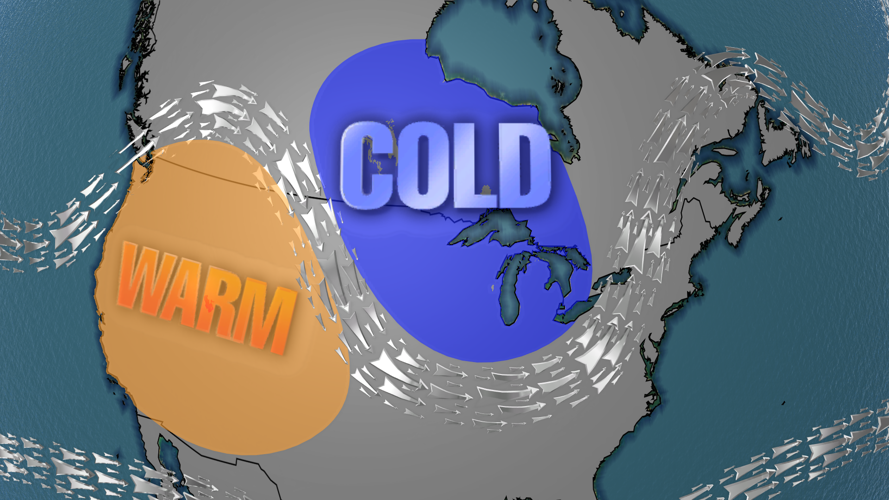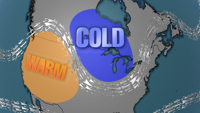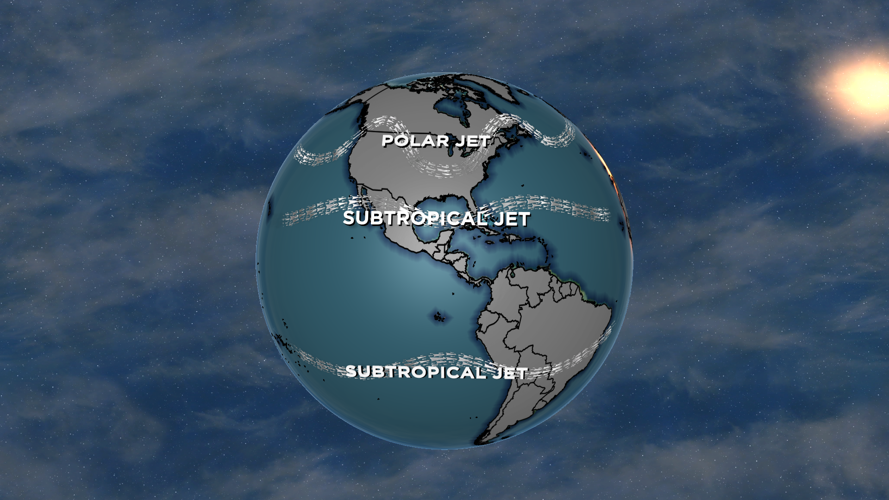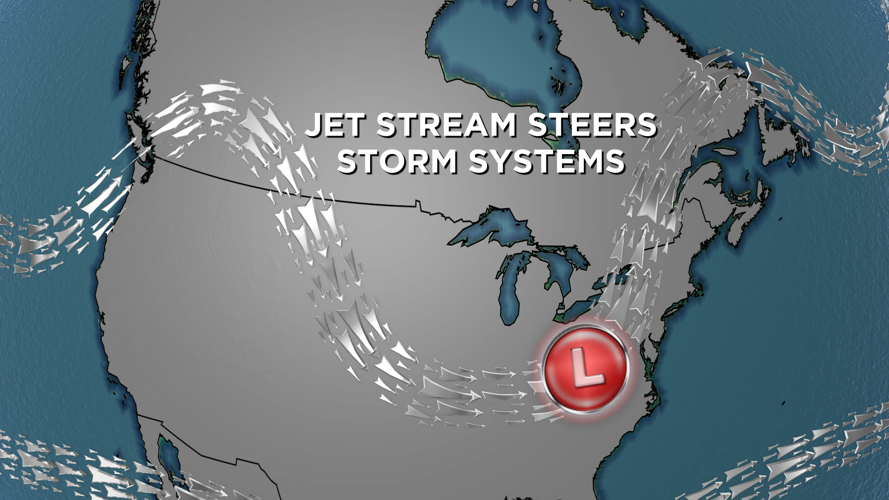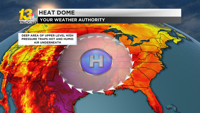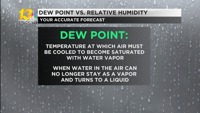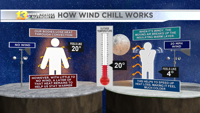Chief Meteorologist Alex Kirchner breaks down how the jet stream works and its role in steering storms our way.
We can thank a ribbon of strong winds high above us for steering different kinds of weather our way.

These strong winds make up the jet streams that circle the Earth. Earth has four primary ones: two polar jets near each of the poles, and two subtropical jet streams near the Equator. We're closest to the polar jet stream in the Northern Hemisphere.

Jet streams form where warm air masses meet cold air masses. The warmer air rises high into the atmosphere, while the cold air sinks. This creates a current, forming the jet stream. The Midwest happens to be about where air from the Arctic and warmer air from the south intersect more frequently.
Jet stream winds generally flow up to 110 mph, but can howl at over 250 mph. The jet stream is usually located between 5 to 9 miles above the ground. The term comes from when airplanes were first able to fly high enough to slip into the jet stream, pushing the planes along at higher speeds.
The jet stream flows from west to east, and steers different weather systems around the globe. These storms usually follow the edge of the jet stream, but if they are farther away, they may get stuck or move slowly.

This all impacts how long we see different temperatures or precipitation. When the jet stream isn't right overhead or nearby, weather systems can stall, bringing us day upon day of the same kind of weather.
The farther south the jet stream gets pushed, the stronger storms can be. Severe storms generally occur when we have the jet stream making massive dips and rises near us.
You can learn more about the weather around us by visiting our Weather Wise page.

